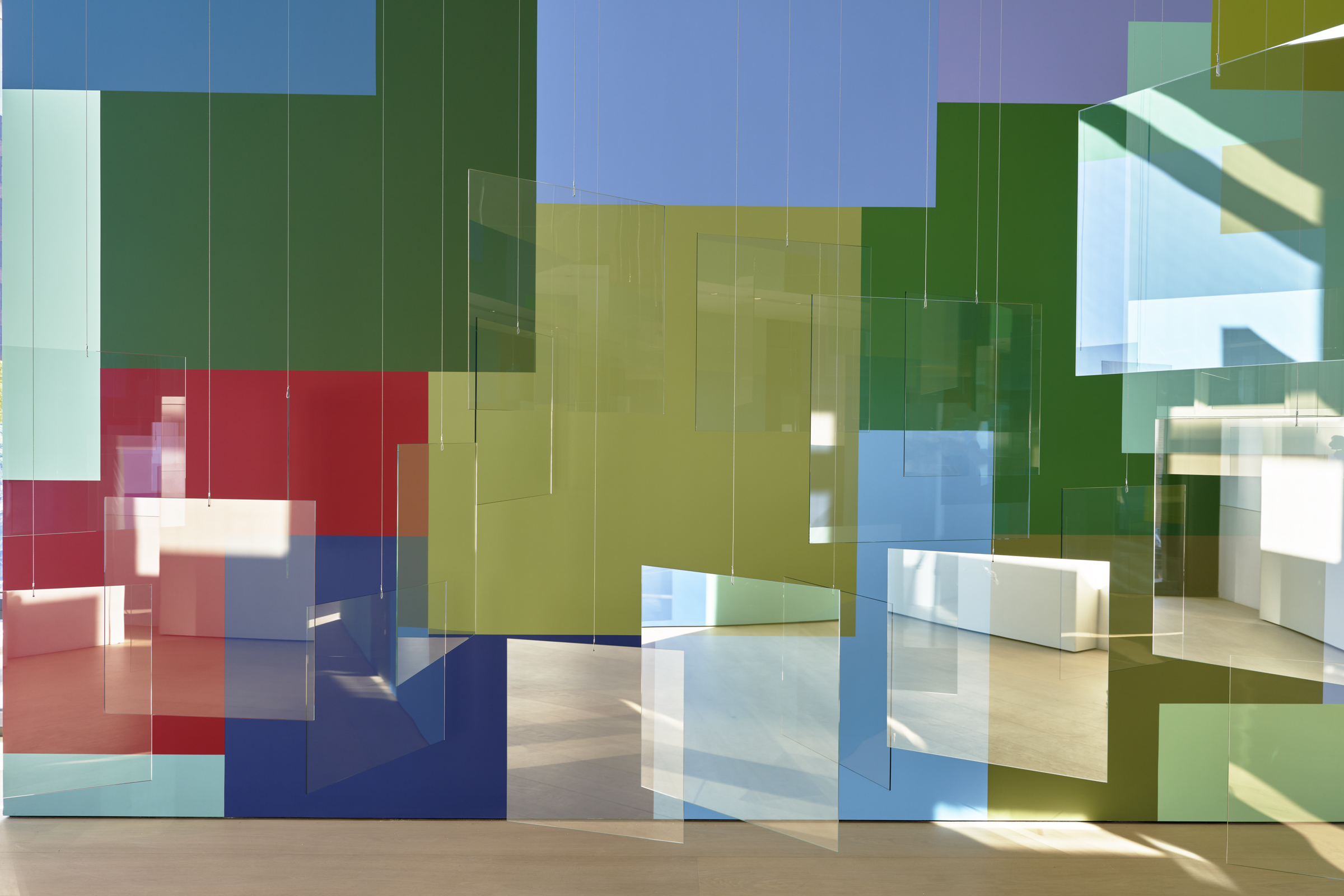Spencer Finch x Spencer Finch

Spencer Finch, Manhattan Light Study (morning becomes afternoon,
afternoon becomes morning), 2022. Powder coated aluminum, plexiglass, filters. Two boxes, 18 x 18 x 12 inches (45.7 x 45.7 x 30.5 cm) each

Spencer Finch, Painting Air (detail), 2022. Glass, hardware, wall painting, dimensions variable
“Manhattan Light Study (morning becomes afternoon, afternoon becomes morning) prompts the viewer to change the way they view the outside world by looking through two open cubes, each featuring a pane of colored plexiglass. The immersive experience of interacting with the work invites the viewer to identify their personal relationship with light and color at different times of the day. The cube to the left, which shows morning turning into the afternoon, might evoke feelings of joy, hope, and optimism. On the other hand, because it depicts the change from afternoon to morning, the cube to the right can be perceived as having a more melancholy attitude. We can best reflect on our innermost feelings and thoughts when we are alone and enveloped in the darkness of the evening. The transition from afternoon to morning and vice versa has its own significance depending on the person, making for an extremely personal interpretation of the work. Although everyone may experience this artwork differently, the ability to associate various times of day with recognizable emotions is a shared experience.
The colors of Painting Air reference specific plants, flowers, and trees from Monet’s garden in Giverny, France. The continual movement of the glass places the viewer in shifting light and reflected scenes. The fixed colors on the wall demonstrate that we all share a common experience with color, especially since Finch is bringing a naturalistic scene to the bustling city of New York. Both Painting Air and Manhattan Light Study (morning becomes afternoon, afternoon becomes morning) are concerned with how the human experience is affected by color, light, and time. The constant motion of Painting Air leads to a greater sense of appreciation for the present, which gives the work an intimate and personal appeal to the audience. The viewer is invited to take in the works’ ever-changing grandeur while soaking in the colors that surround it.”
Laura Gomez, Teen Educator 2022–23